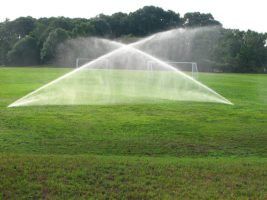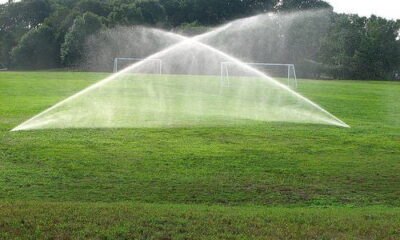

Environment
Why Lawn Aeration Is Important to the Health of Your Lawn
Similar to the air that you take in, it’s essential for your lawn to breath. Whether you walk on it, mow the lawn, or your children spend time playing in the yard, the soil can become more and more compacted with every step. Although seasonal temperature fluctuations and freezing can loosen your soil, your lawn can benefit the most through annual lawn aeration.
How Does the Aeration Process Work?
Homeowners have taken a more proactive approach to helping Mother Earth and the growing processes. Whether it’s done for environmentally friendly reasons or you just want the most enviable lawn in the community, lawn care is more than just mowing and watering. You also have to make sure it has room to breathe, so the nutrients can seep into the roots.
But how does the lawn aeration process work to improve the health of your lawn? Using a special machine, an aerator removes soil-like plugs from the lawn. The leftover soil then has room to expand as the grass grows and flourishes. Depending on your lawn and level of compaction, typical aeration patterns involve 1/2 inch plugs to be removed across the grass every 2 to 6 inches. Once the plugs are removed, you can leave them on top to dissolve naturally or you can remove them on your own via rake.
What Are the Benefits?
The benefits of lawn aeration are numerous, and the process should be repeated yearly. Although it’s possible for you to tackle this job on your own, TruGreen professionals are knowledgeable and experienced to get the job done correctly. They can also determine the personal needs of your lawn and handle any issues such as brown patches, mold, snow mildew, rust, and crown rot.
Lawn aeration can improve the roots of your grass and break down thatch buildup. It can also boost your lawn’s tolerance to heat, drought, and cold climatic conditions. When you’re looking to lay down seed, it can improve the germination. In areas where you need to watch your water usage, lawn aeration can conserve the precious liquid and lessen the runoff.
When to Aerate and How Often?
Knowing when to aerate is dependent on your soil and grass type. In order to prevent lawn diseases, you should implement the process right before the growing season. An expert can help you determine your species of grass and assess for other problems.
Warmer seasoned lawns start their growing period in early summer, and the cooler seasoned lawns start toward the end. For lawns that may be clay based, you may need to aerate at least lease twice during the year. Sandy-based soils need lawn aeration only once a year. Another influencing factor is how much your lawn is used.
Tips and Tricks From the Experts
You should water your lawn before aerating, so that the water can loosen up the soil a bit. Don’t flood the yard with water, but at the same time, don’t use too little water. You’ll want the soil to break apart easily, but you don’t want the soil to be a muddy consistency.
Once the lawn has been sufficiently watered, it’s safe for aeration. It may need to be gone over once or twice, depending on your yard and soil type. After watering, go over the lawn once or twice with the aerator, depending on the consistency of the soil.
Aerating is an integral part of your yearly lawn care regimen. But knowing how to tackle the task and timing of the job is important to the look and wellness of your lawn. When in the hands of the experts, aerating can help you have a healthy lawn that makes your neighbors green with envy.


 Environment10 months ago
Environment10 months agoAre Polymer Banknotes: an Eco-Friendly Trend or a Groundswell?

 Environment11 months ago
Environment11 months agoEco-Friendly Home Improvements: Top 7 Upgrades for 2025

 Features9 months ago
Features9 months agoEco-Friendly Cryptocurrencies: Sustainable Investment Choices

 Features10 months ago
Features10 months agoEco-Friendly Crypto Traders Must Find the Right Exchange



















